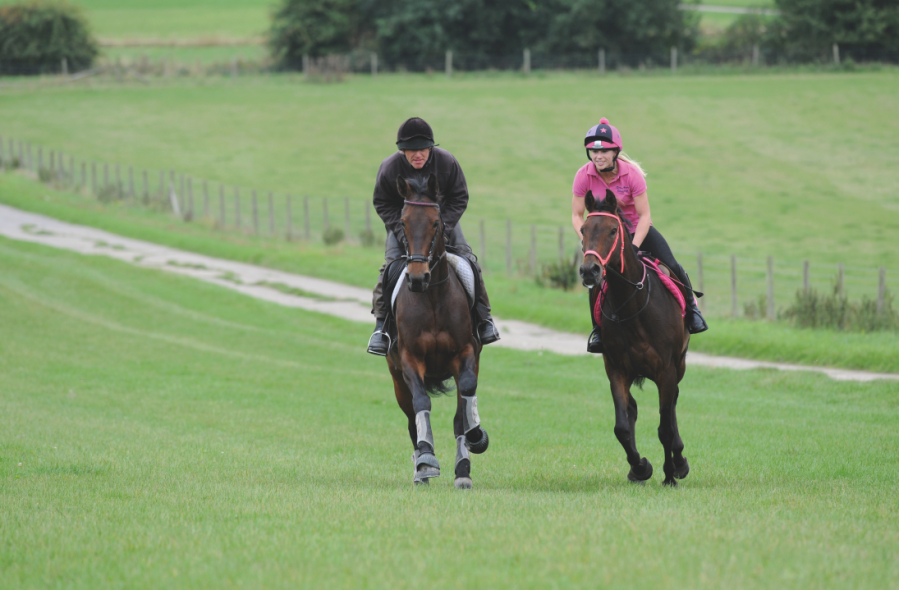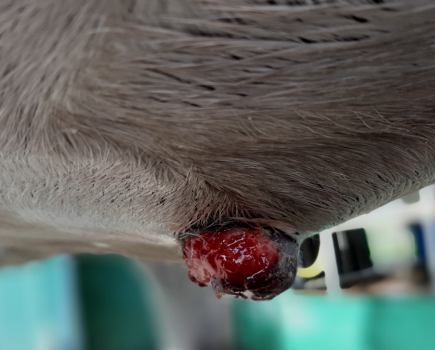Many horses accept bitless bridles and can be more comfortable in them, making them an essential item of horse tack. It’s never too late to give it a go, so if you’ve ever wondered whether going bitless could improve your horse’s way of going — try it! For many people, changing to a bitless bridle has transformed their riding and they would never chose to ride their horses with a bit in their mouth again.
A bitless bridle removes pressure from your horse’s mouth and, depending on the type of bridle you use, will place pressure on different parts of their head. There are lots of reasons why you may chose to ride your horse in a bitless bridle: perhaps they have a mouth injury, which means wearing a bit is painful, or they are extremely sensitive in the mouth. For many owners they believe, from a welfare point of view, that removing the need for a bit is quite simply a kinder way to ride. However, going bitless isn’t for every horse and it’s important to remember that it’s not a replacement for good riding and training.
How to introduce a bitless bridle
Introducing any new item of tack requires time. Time to get used to how it feels and learn how it works, for both horse and rider. If you were changing a bit, the way that bit contacts different areas of the horse’s mouth and the slight signal changes means a horse needs time to adapt and get used to it.
“Bitless bridles are no different in this respect — each type comes into contact with different areas on the horse’s face,” says Phillippa Christie MCMA, an expert in bitless bridle fit and research who founded Bitless Boutique. “We need to educate the horse each time we introduce a new type of bridle.”
The rein aids you use depend on the style of bitless bridle you choose.
“For example, if using a Californian bosal hackamore, you would usually lightly neck rein, which is different from the direct rein cues used with a sidepull,” advises Phillippa. “I recommend that riders think about the strength of their other aids. The first two — your seat and leg — should be the focus. We must give our horses the time to adjust to the new cues, and we do this with a simpler, systematic approach.”
Phillippa recommends the following step-by-step process:
Learning bitless bridle aids: turning left and right
- Starting on the ground, place your inside hand on the withers and, holding the rein in the outside hand, ask them to turn their head with a gentle pull.
- Hold the rein with light contact, and wait for your horse to turn their head slightly towards you. Release as soon as they try.
- Repeat on each side until your horse gets the idea.
- You may like to start with holding the rein outwards, but gradually bring it inwards towards their neck as if you were asking from the saddle. The visual aid of opening the rein away from the horse’s neck can help them understand what you are asking to start with.
When your horse understands the basics of left and right, hold the reins over the pommel and ask them to step backwards with a light rein contact. You’re aiming for a shift in balance to the back hooves, eventually leading to rein-back. Release and reward when your horse thinks or moves backwards. Repeat until they will take two or three steps back with a light rein aid.
Learning bitless bridle aids: long-reining
If your horse is trained to drive, clip on long reins and go for a walk in the arena or paddock. Ask for turns, halts and rein-back. See how light you can make your cues and how responsive your horse can be. If they’re not and it’s safe to do so, ask someone to gently lead your horse and walk alongside them, but leave you to make the aids to turn.
Learning bitless bridle aids: step 3
When your horse is relaxed and listening and you are both ready, get in the saddle. If you feel nervous, try this when someone else is there, such as an instructor, and choose an environment in which you feel safe. When you first get on, allow your horse to stand and relax. Repeat ground exercises one and two from the saddle. Then include your walk on, halt and rein-back.
Remember, it takes time for you both to adapt, so take it in small steps.
Is riding bitless safe?
Former event rider Mark Smith is part of the ‘Bridleless not Brainless’ team chasing team — all horses in the team compete in just a headcollar. Mark believes that amateur riders should explore the possibility of going bitless if they get the chance so that they can experience its benefits. However, he’s keen to point out that bitless riding isn’t suitable for all.
“I’m not anti-bit, just anti what doesn’t suit a particular horse,” says Mark. “I’ve seen dozens of amateur riders have a lot of success bitless, and all horses will happily go bitless, but if a rider’s not happy and doesn’t trust that they have full control then it won’t help their partnership with their horse.”
Mark runs bitless riding clinics.
“Safety has to be the first priority, so we introduce the concept in a confined area to start with, and I always sit on the horse first,” he explains. “I find it helps to boost a rider’s confidence if they see me ride their horse without a bit and be in full control before they have a go. They can then give it a try and will be able to feel that their horse is able to move forwards better.
“For some riders it works, others aren’t so keen – and that’s absolutely fine. Riding should be all about having fun, so you need to explore what works for you,” continues Mark. “People with ex-racers often find they’re well suited to going bitless because their mouths have become desensitised to the bit. Put them in a hackamore and suddenly they can feel what you’re doing again as the bridle’s acting on a completely different part of their face.”
Changing to a bitless bridle
How to make the change from bitted to bitless bridle really depends on the individual horse and rider.
“Both of my horses were in a Pelham before, but I changed them to bitless and they took to it immediately,” says bitless bridle instructor Pat Voisey. “If you think a bit has given your horse issues with bucking, bolting or head shaking, it’s important to get them checked by a vet before going bitless to check there’s no underlying problems. You should also have their saddle checked.
“If no problems are found, it’s wise to try the new bridle in a school or safe environment first,” continues Pat. “I like to lead the horse on the ground first in the new bridle, turning each way a few times. Squeeze the rein as you would to ask for the half-halt to allow your horse to become used to the new feel. If they’re happy with all of this, then mount and have a go in the saddle.”
Will I have any brakes if I go bitless?
Regardless of whether your horse is bitted or bitless, it’s essential that your horse is schooled to understand and accept your aids so that the bridle isn’t your only braking option. Your seat, upper body and weight aids play a role is asking a horse to whoa.
“That being said, I’d say yes, absolutely, you’ll have brakes,” states Pat. “I haven’t tried every bitless bridle on the market, but the ones I have tried have always been very effective: the hackamore, scrawbrig, a rope halter, and the Dr Cook crossover. These bridles all work differently and it’s important to consider your horse’s reaction to the different areas of pressure of each bridle.”
With all bridles, their severity very much depends on the hands that hold the reins. This is true whether you use a bitless bridle or one with a bit.
“The main difference with a bitless bridle is that, when the reins are released, there’s no pressure, so when you do apply the brakes, they’re very effective,” adds Pat. “With a bitted bridle, the pressure of the bit is a constant in the horse’s mouth and pulling too hard on the reins can cause the adverse reactions of throwing the head up, rearing, bucking and bolting.”
Is my horse too old to go bitless?
“It’s never too early or late to make the change to bitless, and no more mucky bits to clean is a bonus,” says Pat. “The age, breed or type of your horse doesn’t really make any difference. One of my horses was 16 when she came to me and went straight from a Pelham into a bitless bridle with no problems. She’s 25 now and still in regular work, managing three-hour hacks in all paces and over all terrain.
“Some older horses may benefit from being ridden bitless because there’s less risk of damage to their teeth from the bit. Horses’ teeth continually erupt until, due to age or damage, they fall out, so the less possibility of damage, the better.
“Riders that change to bitless often comment on how much more relaxed their horses are mentally and physically,” adds Pat. “My advice is to give it a try and see what you think.”
Main image: copyright Your Horse Library/Kelsey Media










